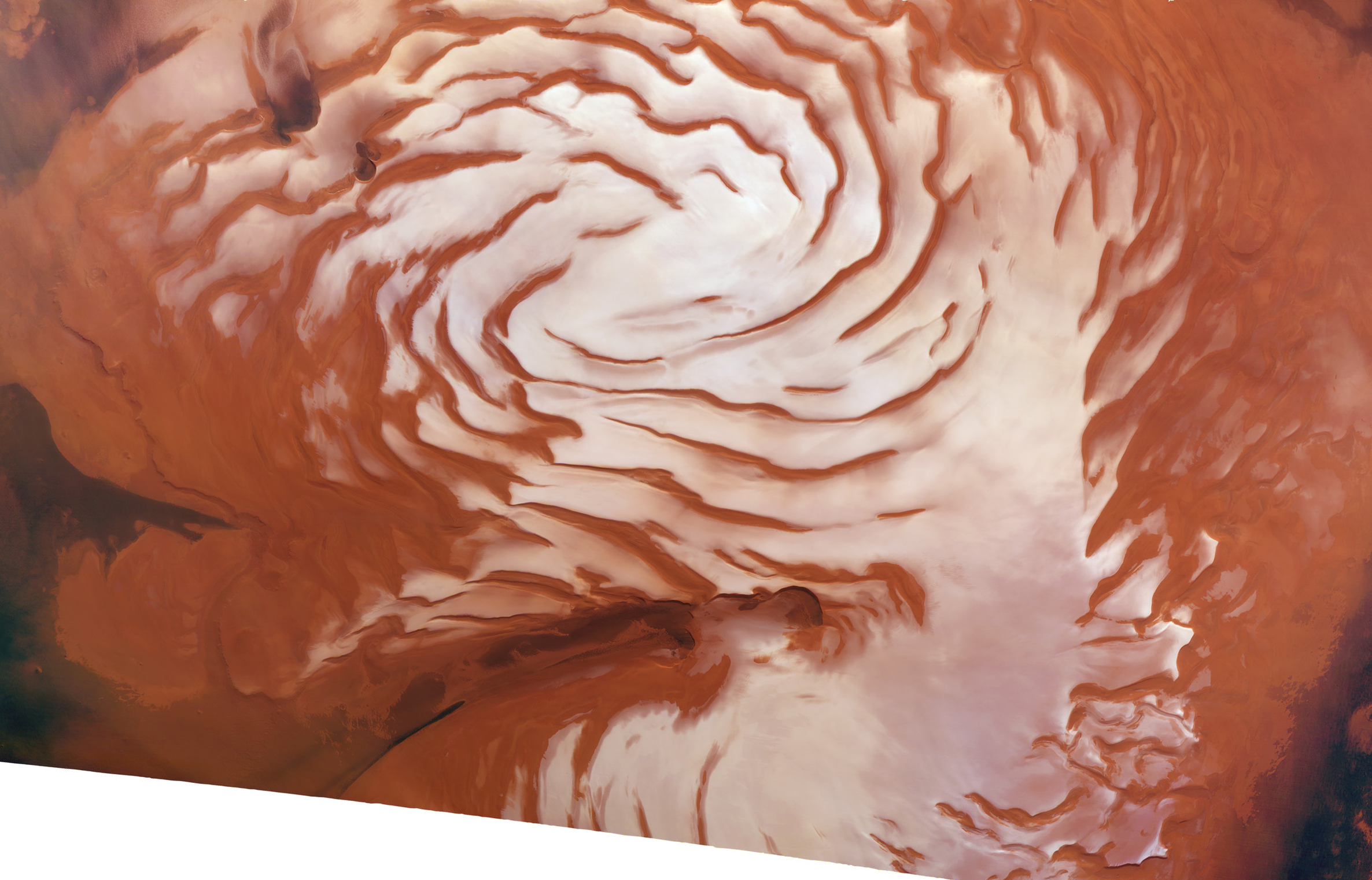
Life on Mars? Steep slopes reveal massive amount of ice buried in Red Planet
Researchers from the U.S. Geological Survey’s Astrogeology Science Center in Arizona located around eight geological features known as scarps on the Martian subsurface. An in-depth analysis of these scarps indicated the presence of thick icy-sheets hidden just under the surface of the planet. The detection of ice on Mars holds a great future for future explorations as well as the possibility of sustenance of life on the fourth planet of the solar system.
Images curated during the study showed the presence of large slopes that quite possibly were made from ice indicating the occurrence of snowfall. The size, accessibility and most importantly the clean source of water can serve as a significant resource for the astronauts in future missions to Mars. Researchers have known for a long time that Mars houses a measurable amount of ice under its surface. However, it wasn’t until now that scientists confirmed the layering pattern along with thickness and purity of the ice.
Recently, scientists observed that the cold and dry sides of the hills on Mars have eroded in a natural manner which points out to the presence of a significant deposit of water in the form of ice. These sheets of ice ranged around an average thickness of 100 meters. A cross-section of the vertical structure of ice helps in determining the history of the same.
A planetary geologist at the U.S. Geological Survey, Colin Dundas, the lead author of the paper stated that the surface of planet Mars was probably damper some billion years ago as compared to the ones today. The ice is present in a series of several layers amidst which the newly formed layers were laid down through a repetitive process over a course of time.
Dundas further explained that the repetitive process is most probably snowfall occurring at regular intervals which gradually turned into compacted deposits. The snowfall could have occurred recently around some tens of millions of years ago. Now, researchers are particularly interested in the significant information that could be obtained by drilling through the ice sheets and testing it back on Earth.
The scarps were studied with the help of high-resolution pictures obtained via Mars Reconnaissance Orbiter. The pictures were taken from an area that was located around 55 degrees south or north of the equator of the Red Planet. However, the scientists also confirmed that the ice-sheets are exposed to warm temperatures causing them to melt and expose the inner layers.
Now, scientists are trying to determine the purity of these ice sheets on Mars. Up until now, the researchers are quite positive that the sheets of ice present in these areas are mostly clean apart from the debris and dust from the area along with salts and minerals absorbed from the Martian soil. This new finding can hold great potential for future human based trips to Mars and even colonization of the planet.
Scientists have been trying to find usable water in both our Moon as well as Mars to bring down the cost of carrying water during any mission. The lack of water limits the duration of any mission as the rockets can hold only a certain amount of water to be used by the astronauts which do not last long. If in future, the scientists are able to utilize the surface ice or water for space missions to Mars or Moon, it can significantly bring down the overall mission expenditure, thereby increasing the duration.


